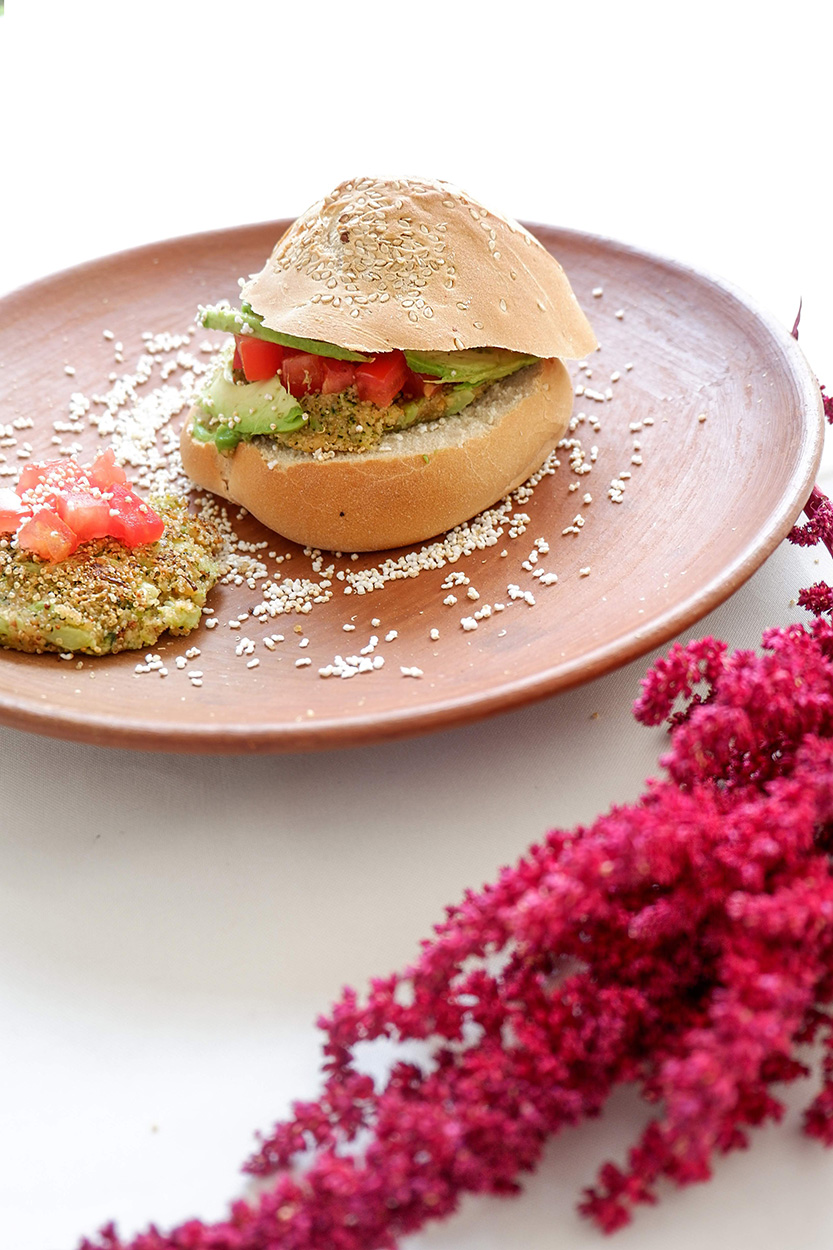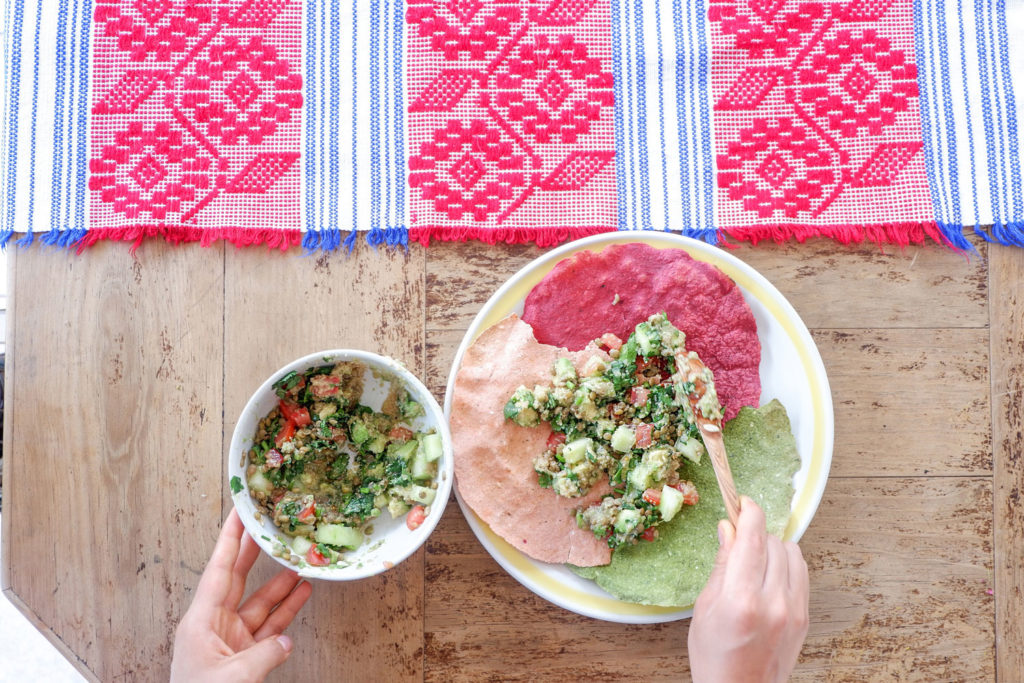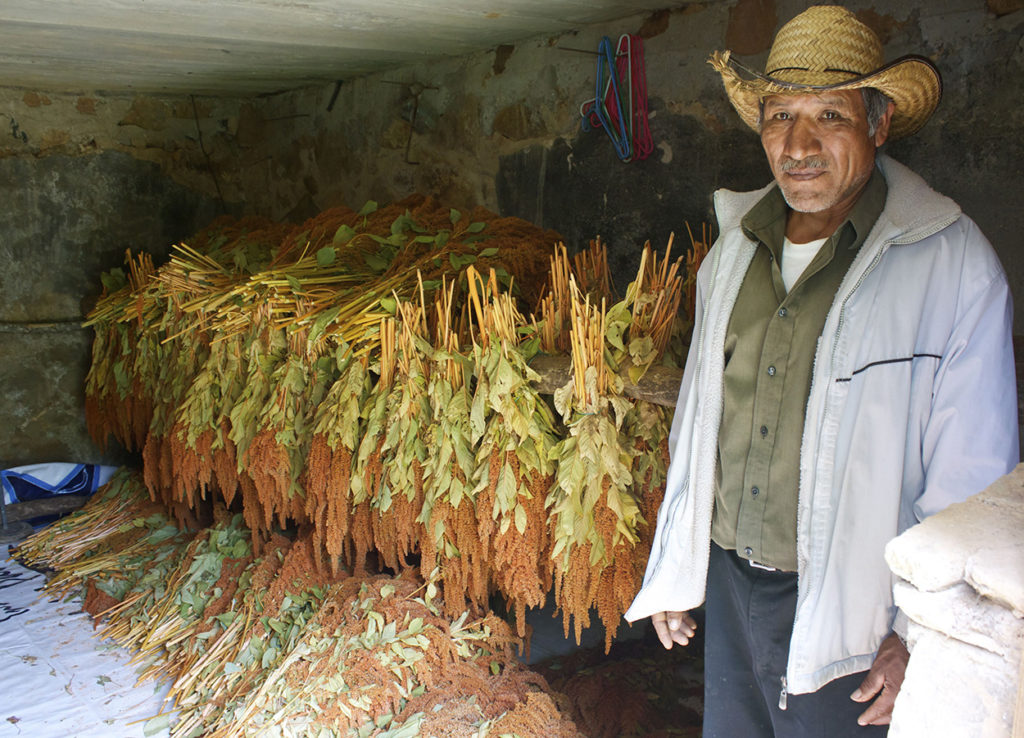Not far from where Lopez lives, in the town of Suchilquitongo, tender young amaranth leaves sprout between rows of corn on Minerva Cruz’s farm. One of close to 250 farmers that Puente works with, Cruz is in her third year of cultivating amaranth. “It’s a very noble plant and it has a lot of traditional value. That’s what caught my attention,” she explains.
Cruz has lent her farm to Puente for five years to serve as an amaranth processing center. Thanks to a federal grant, the farm recently got prototype machines that thresh and clean the plant’s seeds, which has vastly increased efficiency. It “is a really big step [forward] for Puente,” Noll says.
In the brick warehouse adjacent to the machines, Gerardo Lopez, head of Puente’s agricultural extension program, shows how each bag of amaranth seeds is carefully labeled to indicate the varietal it contains and how it was grown. Most of Puente’s farmer partners practice what’s known as agroecological farming — which prizes maintaining biodiversity — or are “in transition” to these methods.
Farmers like Cruz who grow amaranth have also developed a repertoire of recipes for the plant. Although the seed, flour and leaves of the bushy plant can all be consumed, cereal (the popped seeds) is the most commonly used form in Mexico. Cruz’s mother likes to add the leaves to water and blend them with lime peel to make an agua fresca.
Last summer, to promote the use of amaranth in cooking, Puente partnered with well-known Oaxaca City chefs to create new dishes featuring amaranth. Pilar Cabrera of La Olla created an amaranth leaf and grain salad, amaranth sweet bread, breaded amaranth chicken and an amaranth smoothie. Rodolfo Castellanos of Origen created a hamburger on an amaranth bun and a chocolate cake topped with amaranth cereal and red plum ice cream.
Puente’s farmer network has so far exported to only one source outside the country, Toronto’s ChocoSol Traders. There, founder Michael Sacco and chef Chrystal Porter are perfecting a recipe for a “complete-protein tortilla,” made with amaranth, chia seeds and maize.
At Las Quinces Letras in Oaxaca City, chef/owner Celia Florián has hosted amaranth cooking demonstrations by women farmers. She also likes to highlight amaranth and other traditional ingredients prepared in healthy and delicious ways, like her sublimely refreshing agua fresca, filled with strands of the chilacayote squash and its seeds, pilonicillo, bits of lime peel and popped amaranth seeds. Another favorite dish involves blanching amaranth leaves in hot water, squeezing them dry, coating them with beaten egg, breading and frying them. The dish is served with a salsa of pumpkin seeds, or in soup.
“We encourage water over soda at the restaurant,” says Florián. “Gradually people’s mindsets are changing” to healthier behaviors.
Susana Trilling runs a cooking school in Oaxaca. “I work with a lot of women from the mountains, and they use amaranth to make fritters and soups,” she says. “They boil the leaves in a clay pot with onion and garlic, and it’s always served with hard-boiled egg and Mexican rice.”
Trilling has taught some of these recipes at her school, and incorporates fresh amaranth in the summer months as part of her staff breakfast with hard-boiled eggs. “Especially during the amaranth appreciation campaign,” she adds, “people got excited” about the idea of using amaranth as an alternative to granola, in crepes, and in wafers Trilling makes with her students with amaranth flour and coconut.
If all these delicious uses are not enough to convince Oaxacans to consume more amaranth, Puente has another enticement up its sleeve.
Every October, on “Amaranth Day,” it sponsors the making of a giant tlayuda, a popular street food made by topping a corn tortilla with beans, cheese and chopped cabbage. In 2016 Puente made a 12-meter-square tlayuda, incorporating amaranth flour, cereal, seeds or leaves in every layer — from the tortilla dough to the topping of toasted grasshopper, avocado, radish and salsa.
“We thought it would last longer than it did!” recalls Bigda-Peyton. “It probably took all of 25 minutes for the crowd to finish eating it … a new take on an old favorite.”












